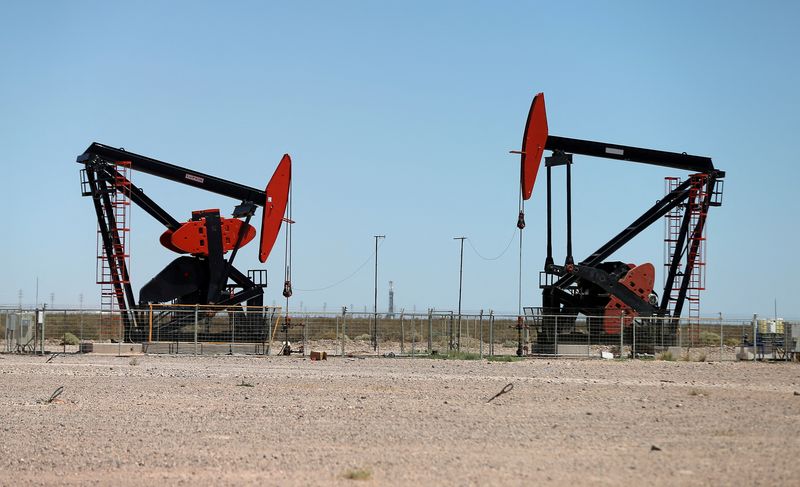Commodities
Oil forecasts cut for 5th straight month on demand, OPEC uncertainty: Reuters poll

By Sherin Elizabeth Varghese
(Reuters) – Analysts have cut their 2024 oil price forecasts for a fifth consecutive month, citing weaker demand and uncertainty over OPEC’s plans, with prices expected to remain under pressure despite geopolitical risks, a Reuters poll found on Monday.
A Reuters poll of 41 analysts and economists conducted in the past two weeks projected would average $81.52 per barrel in 2024, the lowest poll projection since February and down from $82.86 projected in August.
prices are expected to average $77.64, below last month’s forecast of $78.82.
“The recent weakness in oil prices is partly attributable to market concerns over how and when OPEC will return barrels to the market, alongside weaker Chinese demand indicators,” said Roger Read, Senior Energy Analyst at Wells Fargo.
Global oil demand is now expected to grow by 0.9 to 1.2 million barrels per day (mbpd) in 2024, down from previous estimates of 1 to 1.3 mbpd, as per the poll.
Both OPEC and the International Energy Agency (IEA) have cut their forecasts, citing slower Chinese demand, with OPEC reducing its 2024 oil demand growth outlook for the second time.
“Slower economic growth in major economies such as China and Europe, coupled with expectations of weak demand, are pushing prices down despite geopolitical uncertainty,” said Sehul Bhatt, Director of Research at CRISIL Market Intelligence and Analytics.
Most analysts believe that the war-related risk premium in oil prices has diminished due to plentiful supply, but some analysts said the premium could return if tensions escalate, particularly in the Middle East.
Florian Grunberger, senior analyst at data and analytics firm Kpler, said if hopes for a ceasefire (in Gaza) remain unfulfilled a higher risk premium for oil could return.
Oil prices surged past $90 a barrel in April, driven by Middle East tensions and OPEC+ supply cuts. But they have sharply reversed course, dipping below $70/bbl this month, as weak demand trends have led to an supply overhang. [O/R]
OPEC+ is still expected to move forward with a planned production increase in December, but output cuts are needed first to address overproduction by some members.
“We expect OPEC+ to go ahead with a production increase in December,” said Societe Generale (OTC:) commodity strategist Mike Haigh.

“However, given the disappointing demand outlook and rising OECD commercial stocks, the full cuts cannot be completely unwound as prices will begin to deteriorate.”
Currently, OPEC+ is cutting output by 5.86 million bpd, or about 5.7% of global demand. Earlier this month, the group delayed its plan to boost output after oil prices hit a nine-month low.
Commodities
Oil prices rise; U.S. crude inventories plunge, Russia-Ukraine truce eyed
Commodities
India’s Reliance to stop buying Venezuelan oil over US tariffs, sources say
Commodities
Oil prices climb on Venezuela supply worries

 Forex3 years ago
Forex3 years agoForex Today: the dollar is gaining strength amid gloomy sentiment at the start of the Fed’s week

 Forex3 years ago
Forex3 years agoUnbiased review of Pocket Option broker

 Forex3 years ago
Forex3 years agoDollar to pound sterling exchange rate today: Pound plummeted to its lowest since 1985

 Forex3 years ago
Forex3 years agoHow is the Australian dollar doing today?

 Cryptocurrency3 years ago
Cryptocurrency3 years agoWhat happened in the crypto market – current events today

 World3 years ago
World3 years agoWhy are modern video games an art form?

 Commodities3 years ago
Commodities3 years agoCopper continues to fall in price on expectations of lower demand in China

 Economy3 years ago
Economy3 years agoCrude oil tankers double in price due to EU anti-Russian sanctions























